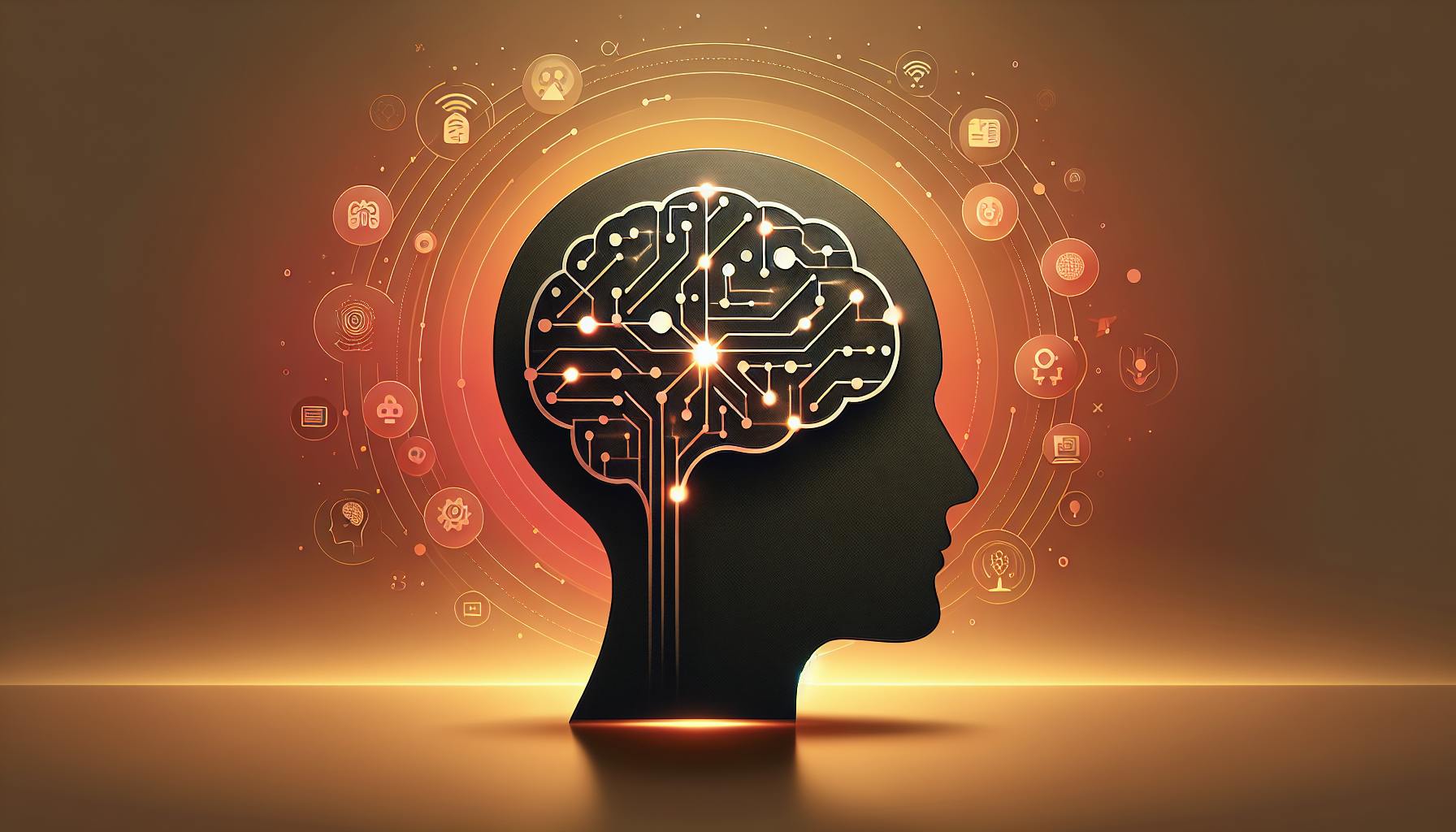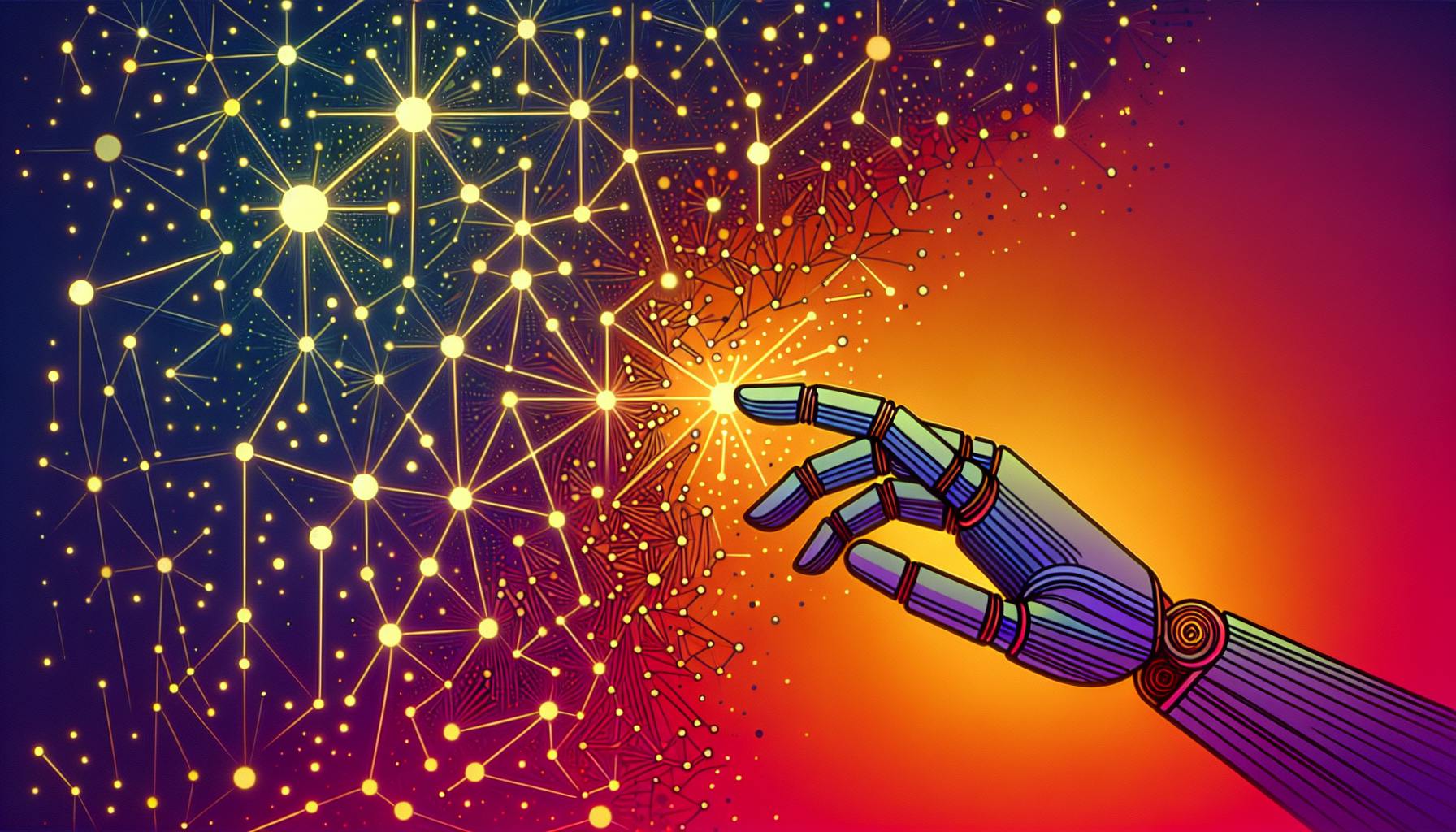As an engaged reader and technology enthusiast, you likely want to stay current on OpenAI's latest conversational AI models and features. In this article, we will explore ChatGPT-3.5 and other recent updates that aim to enhance AI-driven dialogues. With a focus on improvements in coherence, factuality, and versatility, we will examine how these new capabilities can provide more natural, knowledgeable conversations. Whether you are an AI researcher, business leader, or casual user, this piece offers key insights to understand where conversational AI is headed. Now let's dive in and unpack what's new with some of today's most advanced chatbots.
Introduction to OpenAI and ChatGPT
AI Research Powerhouse
OpenAI is an AI research company at the forefront of developing advanced language models and conversational AI assistants. Founded in 2015 with a mission to create beneficial artificial intelligence, OpenAI has pioneered breakthroughs like GPT-3 – one of the most capable natural language processing (NLP) models to date.
ChatGPT: Revolutionizing Conversations
Among OpenAI's latest innovations is ChatGPT, a cutting-edge conversational AI system built on the GPT-3.5 language model. Unleashing the power of large language models, ChatGPT can engage in intelligent dialogues, answer follow-up questions, and provide coherent responses across a wide range of subjects.
Its advanced transformer architecture and reinforcement learning training enable ChatGPT to understand context, formulate nuanced responses, and even admit uncertainties – capabilities that were once thought to be exclusive to humans.
Beyond Simple Chatbots
While traditional chatbots often struggle with maintaining context or providing substantive information, ChatGPT represents a significant leap forward in conversational AI. It can:
-
Discuss complex topics in depth, drawing insights from its vast knowledge base.
-
Generate creative content ideas, outlines, and drafts for writing projects.
-
Explain technical concepts, offer coding assistance, and debug programming issues.
-
Provide personalized responses tailored to the user's preferences and communication style.
ChatGPT's versatility opens up new possibilities across industries, from enhancing customer service experiences to streamlining content creation and ideation processes.
Shaping the Future of Human-AI Interaction
As OpenAI continues to push the boundaries of what's possible with language models and conversational AI, ChatGPT stands as a testament to the company's commitment to developing safe and beneficial artificial intelligence. By enabling more natural and engaging interactions between humans and machines, ChatGPT offers a glimpse into the future of seamless human-AI collaboration.
Whether you're a curious explorer, a business seeking innovative solutions, or a developer at the forefront of AI, OpenAI's ChatGPT presents an exciting opportunity to experience the transformative potential of advanced conversational AI firsthand.
Overview of OpenAI's Latest Chat Models
Advanced Conversational Abilities
OpenAI's ChatGPT is at the forefront of conversational AI, harnessing the power of GPT-3 to deliver human-like dialogue capabilities. As outlined in this guide, ChatGPT can engage in natural language interactions, understand context, and even develop its own unique personality. From customer support to content generation and data analysis, ChatGPT's versatility makes it a valuable asset across industries.
Continuous Innovation
OpenAI remains committed to expanding GPT-3's skills, which will directly enhance ChatGPT's capabilities. As this blog highlights, the Playground tool allows users to experiment with AI models and build basic chatbots. This iterative process drives innovation, paving the way for increasingly sophisticated conversational experiences.
Tailored Solutions with Custom GPTs
While ChatGPT provides a robust foundation, integrating custom GPTs can unlock even greater potential. These specialized models offer improved accuracy, depth, and context for niche domains, enabling highly tailored chatbot interactions. From healthcare to education, custom GPTs empower organizations to deliver personalized, industry-specific solutions.
Ethical and Open Source Alternatives
Although ChatGPT itself is not open source, its impact has catalyzed exploration of ethical and open approaches to AI. As this article notes, projects like Anthropic's Claude and BigScience's Bloom are pioneering open source alternatives. Platforms like TensorFlow and Hugging Face further democratize access to robust AI models, fostering responsible innovation worldwide.
Advancements in Natural Language Processing
At its core, ChatGPT leverages cutting-edge natural language processing techniques, as detailed in this insightful blog. Constitutional AI, reinforcement learning, and transformer architectures enable ChatGPT to understand human language patterns, provide nuanced responses, and continuously improve through conversations.
The Future of Conversational AI
With GPT-4 on the horizon, the landscape of conversational AI is poised for significant advancements. Improved context comprehension, personalized responses, and expanding knowledge will further elevate chatbot interactions. As this blog emphasizes, integrating custom GPTs with ChatGPT's advanced capabilities can unlock a new era of tailored, industry-specific chatbot solutions that truly understand and adapt to users' needs.
Key Features and Capabilities of ChatGPT-3.5
As an advanced conversational AI model developed by OpenAI, ChatGPT-3.5 boasts several remarkable features and capabilities that set it apart from traditional chatbots. This cutting-edge system showcases significant progress in natural language processing, enabling it to engage in coherent and contextual discussions spanning multiple topics.
Contextual Understanding and Conversation Flow
One of the standout abilities of ChatGPT-3.5 is its proficiency in understanding context and maintaining a natural flow of conversation. According to AllGPTs, it can comprehend the nuances of a discussion, acknowledge mistakes, and refuse inappropriate requests, all while sustaining an engaging dialogue. This contextual awareness allows for seamless and meaningful interactions, elevating the user experience.
Versatile Knowledge and Reasoning Capabilities
Thanks to its training on vast datasets, ChatGPT-3.5 possesses a broad knowledge base covering various subjects. As noted by AllGPTs, it can answer questions, provide explanations, automate tasks, and even assist with content creation and proofreading. Its ability to reason logically and draw insights from its knowledge base makes it a versatile virtual assistant for a wide range of applications.
Customization through Domain-Specific Models
While ChatGPT-3.5 excels in general conversations, its capabilities can be further enhanced through the integration of domain-specific GPT models. AllGPTs highlights that by fine-tuning the model on specialized data, users can create custom chatbots tailored to specific fields like medicine, law, or coding. These customized models improve accuracy, relevance, and depth of knowledge within niche areas, enabling more focused and nuanced interactions.
Enhanced Capabilities with Open-Source AI
The potential of ChatGPT-3.5 can be further expanded through the integration of open-source AI models and technologies. As discussed by AllGPTs, connecting ChatGPT to knowledge graphs, databases, and specialized NLP models can improve language understanding, fact-checking, and domain-specific expertise. This synergy between ChatGPT and open-source AI offers exciting possibilities for tailoring the system to specific use cases and industries.
With its advanced natural language processing capabilities, contextual understanding, vast knowledge base, and potential for customization, ChatGPT-3.5 represents a significant leap forward in conversational AI. As the technology continues to evolve, we can expect even more innovative features and applications to emerge, further enhancing our ability to interact with AI in natural and meaningful ways.
Comparing ChatGPT-3.5 to Previous Versions
Significant Advancements
ChatGPT-3.5 represents a major leap forward in conversational AI compared to previous ChatGPT models. Powered by OpenAI's most advanced language model, GPT-3.5, this latest iteration boasts enhanced language processing capabilities that allow for a deeper understanding of context and more nuanced discussions across a wide range of topics.
The key advantage of ChatGPT-3.5 lies in its training on vastly larger datasets than its predecessors. This comprehensive knowledge base equips the model with a more extensive understanding of language, enabling it to engage in more knowledgeable and versatile conversations.
Improved Conversational Abilities
One of the standout features of ChatGPT-3.5 is its ability to understand questions better, gather context from conversations, and form thoughtful responses. Unlike earlier versions, which often struggled with maintaining coherence and providing relevant responses, this iteration demonstrates a marked improvement in its ability to carry out intelligent, human-like dialogues.
Additionally, ChatGPT-3.5 excels at providing in-depth explanations on complex topics, discussing nuanced subjects appropriately, and generating creative content ideas. Its advanced natural language processing techniques, such as transformer architectures and reinforcement learning, contribute to its enhanced conversational skills.
Continuous Improvements
While ChatGPT-3.5 represents a significant step forward, OpenAI is continuously working to further refine and improve the model. Future iterations, like the highly anticipated ChatGPT-4, are expected to demonstrate even more advanced capabilities, such as improved accuracy, faster response times, and a broader knowledge base.
However, it's important to note that recent studies have suggested that models like ChatGPT-3.5 and GPT-4 may have declined in quality over time due to issues like learning harmful behaviors, frequent updates introducing errors, and safety measures limiting capabilities. As such, it remains crucial for OpenAI to address these challenges and ensure that future iterations continue to provide reliable, safe, and ethical conversational experiences.
Real-World Applications and Use Cases
Conversational AI Assistants
OpenAI's chat models are rapidly transforming customer service experiences across industries. Companies are leveraging these AI agents to power intelligent chatbots and virtual assistants that can engage in more natural conversations. According to a Bain & Company study, increasing customer retention by just 5% can boost profits between 25-95%. With ChatGPT's ability to understand context and provide thoughtful responses, it can resolve common issues, offer personalized recommendations, and enhance customer satisfaction.
Personalized Content Generation
Content creators and media platforms are utilizing ChatGPT to generate highly personalized content tailored to individual preferences. Over 4.4 million new blog posts are published daily, making it crucial to stand out. ChatGPT can analyze a user's consumption patterns and interests to create blog posts, articles, social media captions, and even story continuations that resonate with their unique tastes.
Specialized Industry Applications
While ChatGPT excels in general knowledge domains, custom GPT models are being developed to cater to specialized industries like healthcare, legal, finance, and engineering. As highlighted in an AI Index report, GPU performance enabling such models has increased 7,000 times since 2003. Examples include:
-
MedGPT for interpreting medical records, diagnosing conditions, and recommending treatments.
-
LawGPT for legal research, contract review, and regulatory compliance.
-
FinGPT for financial analysis, portfolio management, and economic forecasting.
These custom models leverage domain-specific data to provide accurate and nuanced insights within their respective fields.
AI-Augmented Productivity and Creativity
By integrating with other AI tools focused on reasoning, memory, and creativity, ChatGPT can unlock new levels of productivity and innovation. As discussed on AllGPTs.co, combining ChatGPT with applications like Anthropic's Claude, DeepReason, and DALL-E can enhance its analytical capabilities, conversational context tracking, and creative idea generation. Writers, researchers, and professionals across domains can leverage this AI-augmented system to streamline workflows and boost creative output.
Limitations and Challenges of ChatGPT Models
While ChatGPT models have demonstrated impressive natural language processing capabilities, they still face several limitations and challenges. It's crucial to understand these shortcomings to leverage the technology effectively and mitigate potential risks.
Lack of Deeper Reasoning and Creativity
One of the primary limitations of ChatGPT is its inability to perform deeper reasoning and exhibit true creativity. These models rely on patterns in their training data, which can lead to inconsistencies and a lack of nuanced understanding in complex or open-ended scenarios. As a result, ChatGPT may struggle with tasks that require logical deductions, multi-task dialogues, or generating truly novel ideas.
Knowledge Gaps and Factual Inaccuracies
Despite their broad knowledge coverage, ChatGPT models can have gaps in specialized domains or provide factually inaccurate responses. They may lack expertise in niche areas like healthcare, finance, or cutting-edge technologies, limiting their usefulness in these contexts. Additionally, their training data may contain biases or outdated information, leading to potentially harmful or misleading outputs.
Lack of Context and Grounding
ChatGPT models can excel at generating coherent and fluent text, but they may struggle to maintain contextual understanding and grounding over extended conversations. Without true comprehension, they may produce responses that lack consistency or fail to account for the nuances of a particular situation or domain.
Ethical Concerns and Bias
As with any AI system, there are ethical concerns surrounding the development and deployment of ChatGPT models. These include potential algorithmic biases, privacy issues, and the risk of generating harmful or offensive content. Responsible development and application of these technologies are crucial to ensure they benefit society and uphold human values.
Integration Challenges
While integrating ChatGPT with complementary AI applications can enhance its capabilities, this process presents its own set of challenges. Seamless integration requires careful planning, monitoring, and the use of appropriate prompts and APIs to ensure a smooth user experience. Identifying the right combination of AI solutions and implementing them effectively can be a complex undertaking.
To address these limitations and challenges, ongoing research and development efforts focus on improving ChatGPT's reasoning abilities, expanding its knowledge base, enhancing contextual understanding, and ensuring ethical and responsible development practices. By acknowledging and addressing these limitations, we can unlock the full potential of ChatGPT models while mitigating potential risks and concerns.
The Future of AI-Powered Conversations
As conversational AI models like ChatGPT continue advancing, the future of human-computer interactions looks increasingly promising. By leveraging the latest advancements in natural language processing, machine learning, and knowledge representation, AI assistants are poised to streamline conversations across various domains.
Specialized AI Models for Tailored Expertise
While models like ChatGPT demonstrate impressive general knowledge capabilities, specialized AI models trained on domain-specific data can provide tailored expertise in areas like healthcare, law, or coding. These niche models will empower AI assistants to offer highly specialized guidance and insights, enhancing their value across diverse industries.
Multilingual AI for Global Accessibility
To make conversational AI accessible globally, initiatives are underway to build massively multilingual models capable of understanding and communicating in over 100 languages. This will enable seamless, localized interactions, breaking down language barriers and democratizing access to AI-powered conversations.
AI-Human Collaboration for Creative Expression
Generative AI models are exploring creative applications in fields like art, writing, and music composition, fostering AI-human collaboration. By augmenting human creativity with AI's generative capabilities, we may witness a new era of artistic expression and innovation.
Ethical AI and User Customization
As AI systems become more prevalent, ensuring they align with human values and individual preferences is crucial. Projects focused on embedding ethical principles and enabling user customization aim to build trustworthy AI assistants that respect privacy, mitigate biases, and adapt to unique user needs.
Multimodal Interactions and Emotional Intelligence
Future AI assistants may transcend text-based interactions, incorporating multimodal capabilities like vision and speech recognition. Advances in emotional intelligence could also enable AI to better understand and respond to human emotions, fostering more natural and empathetic conversations.
As these advancements continue, AI-powered conversations are poised to become increasingly intuitive, personalized, and capable of handling complex queries across diverse domains. By integrating the latest techniques in areas like self-supervised learning, multimodal understanding, and autonomous learning, future AI systems may unlock assistants that are far more capable and collaborative than current models like ChatGPT.
OpenAI's Latest Chat Models on All GPTs Directory
AI-Powered Conversations
OpenAI's chat models, such as the groundbreaking ChatGPT-3.5, are revolutionizing the way we interact with artificial intelligence. These advanced language models are designed to engage in natural, human-like conversations, providing insightful responses and assisting with a wide range of tasks.
Seamless Integration
The All GPTs Directory serves as a comprehensive hub for discovering and exploring various chat models, including OpenAI's offerings. With seamless integration, users can effortlessly access and utilize these cutting-edge AI agents, streamlining their workflows and unlocking new possibilities.
Continuous Improvements
OpenAI is constantly pushing the boundaries of AI technology, regularly releasing updated versions of their chat models with enhanced capabilities. The All GPTs Directory ensures users have access to the latest iterations, benefiting from improved language understanding, more nuanced responses, and expanded knowledge bases.
Personalized Experiences
One of the key strengths of OpenAI's chat models is their ability to adapt to individual preferences and communication styles. Through machine learning and natural language processing, these AI agents can tailor their responses to provide a personalized experience, ensuring more engaging and meaningful interactions.
Diverse Applications
The applications of OpenAI's chat models are vast and constantly expanding. From creative writing and coding assistance to research and analysis, these AI agents are proving invaluable across various industries and domains. The All GPTs Directory showcases the diverse range of applications, empowering users to explore and leverage these powerful tools.
Ethical AI Development
OpenAI is committed to the responsible development of artificial intelligence, ensuring their chat models adhere to ethical principles and safeguards. The All GPTs Directory highlights these efforts, providing transparency and fostering trust in the responsible use of AI technology.
By featuring OpenAI's latest chat models, the All GPTs Directory empowers users to harness the full potential of AI-driven conversations, unlocking new levels of productivity, creativity, and innovation.
Conclusion
As OpenAI continues to develop and refine its chatbot models, we can expect even more exciting advances in conversational AI. While the capabilities of systems like ChatGPT today are already quite impressive, they still have limitations that future iterations will aim to address. However, it's clear that OpenAI is committed to pushing boundaries in natural language processing. Users eager to engage with cutting-edge chatbots should follow OpenAI's progress closely. The opportunities for more natural, intelligent, and useful AI-driven conversations are expanding rapidly.


